Lhoba is any of a diverse amalgamation of Sino-Tibetan-speaking tribespeople living in and around Pemako, a region in southeastern Tibet including Mainling, Medog and Zayü counties of Nyingchi and Lhünzê County of Shannan, Tibet.

The gayal, also known as mithun, is a large domestic cattle distributed in Northeast India, Bangladesh, Myanmar and in Yunnan, China.

The Adi people are one of the most populous groups of indigenous peoples in the Indian state of Arunachal Pradesh. A few thousand are also found in the Tibet Autonomous Region where they are called the Lhoba together with some of the Nishi, Na, Galo, Mishmi people and Tagin people.

The Miji, also known by the names of Sajolang and Damai, inhabit the districts of West Kameng, East Kameng and a minuscule region of Kurung Kumey in Arunachal Pradesh, India. Their population of 37,000 are found near the lower parts of the sub-Himalayan hills bordering Assam; they speak the Sajalong language. The word Miji is derived from two distinct words 1) Mai means fire and 2) ji meaning Giver. The word/name came into being after the Aka ( Hrusso) community regarded the Sajolang/Dammai people for their gracious help during the past.
The Indian state of Arunachal Pradesh has a total population of roughly 1.4 million on an area of 84,000 km2, amounting to a population density of about 17 pop./km2 . Much of Arunachal Pradesh is forested. The "indigenous groups" account for about two thirds of population, while immigrants, mostly of Bengali/Hindi belt origin, account for a third.
Tani, is a branch of Sino-Tibetan languages spoken mostly in Arunachal Pradesh, India and neighboring regions.
A Hindu wedding, known as Vivaha in Sanskrit, or Lagna (लग्न) or Kalyanam (कळ्याणम्) is the traditional wedding ceremony for Hindus. The wedding ceremonies are very colourful, and celebrations may extend for several days. The bride's and groom's home—entrance, doors, wall, floor, roof—are sometimes decorated with colors, balloons, and other decorations.
The Miju Mishmi, also known as Kaman or Kammaan, are one of the three tribes of the Mishmi people of Tibet and Arunachal Pradesh. Members of this tribe are located in Anjaw and Lohit districts. The Miju clans claim to have come from the Kachin country of Burma. They speak languages of the Midzu branch of Tibeto-Burman.
ABOTANI or Abu Tani is considered the progenitor of the Tani tribes of the state of Arunachal Pradesh in India, such as the Apatani, the Nyishi, the Adi, the Galos and Tagin. Mishing tribe of Assam also belong to ABOTANI group. ABOTANI tribes are also found inside Tibet/China near Indo-China border. Inside China ABOTANI tribes comes under an ethnic tribe called LHOBA which is a conglomeration of Mishmi and ABOTANI tribes.They follow the Donyi-Polo religion and credit Abotani with the technique of rice cultivation.

The Tagin are one of the major tribes of Arunachal Pradesh, a member of the larger designation of Tani Tribes.Tagins are known for their warm hospitality and are considered very friendly in nature and also pure hearted.

Hill Miri (exonym/sub-tribe) are a native tribe of Arunachal Pradesh in Northeast India. They are spread in Upper Subansiri and Kamle districts.

Punjabi wedding traditions are a strong reflection of Punjabi culture with ritual, song, dance, food, and dress that have evolved over centuries.
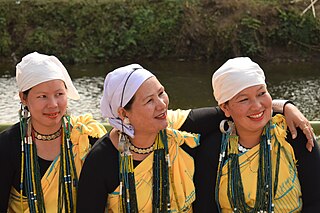
The Galo are a central Eastern Himalayan tribe, who are descendants of Abotani and speak the Tani Galo language. The Galo people primarily inhabit West Siang, Lepa Rada, and Lower Siang districts of modern-day Arunachal Pradesh state in northeastern India, but they are also found in the southwestern side of East Siang district, the southeastern side of Upper Subansiri district, as well as in some small pockets in Itanagar. Other names which have been used to reference the Galo in the past include Duba, Doba, Dobah Abor, Gallong Abor, Galong, Gallong Adi, etc. The Galo have been listed as a scheduled tribe under the name Gallong since 1950.

The Kisan are a tribal group found in Odisha, West Bengal and Jharkhand. They are traditional farmers and a food gathering people. They speak Kisan, a dialect of Kurukh, as well as Odia and Sambalpuri. The tribe mainly lives in northwestern Odisha, in the districts of Sundergarh, Jharsuguda and Sambalpur. Other populations live in Malda district in western West Bengal and Latehar and Gumla districts of western Jharkhand.
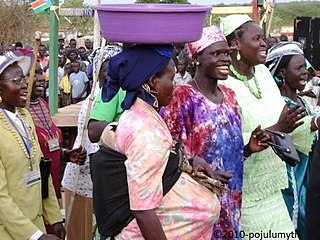
The Pojulu tribe is of the savanna lands in the White Nile Valley, in the Equatoria region of South Sudan. They are Nilotic people and part of the Karo people — which also includes Bari, Mundari, Kakwa, Kuku, and Nyangwara.
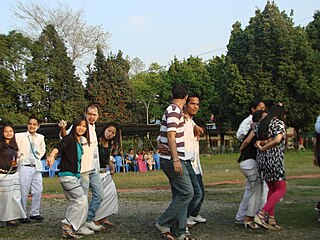
The MopinFestival is an agricultural festival celebrated by the Galo tribe of Arunachal Pradesh, India in particular of the Galo group of tribes which resides in East Siang and West Siang districts. It is a celebration of the harvesting season held in the Galo months of "Lumi" and "Luki", corresponding to March–April and the new year for the Galo tribe. The Galo tribe follow an animist religion called Donyi-Polo.
Nyokum is a festival celebrated by the Nyishi tribe of the Indian state of Arunachal Pradesh. The Word Nyokum has been derived from the combination of two words - Nyok means land (earth) and Kum means collectiveness or togetherness. Therefore, the Nyokum festival may very well be interpreted as inviting all the Gods and Goddesses of the universe, with the Nyokum Goddess as the principal deity, to a particular venue at a particular time. The festival is commonly celebrated by the people from all class and walk of life for better productivity, prosperity and happiness of all human beings.
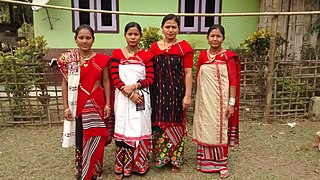
The Mising, sometimes called Miri, are an indigenous community inhabiting parts of the Indian states of Assam and Arunachal Pradesh. They were also known as Miris in the past and still recognized as Miris in the Constitution of India. Misings are recognised as a Scheduled Tribe by the Indian government under the name 'Miri'. Their language, Mising, is part of the Tani branch of the Sino-Tibetan family.
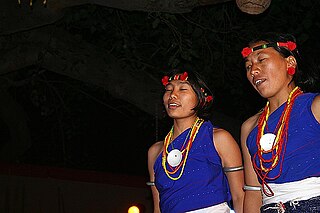
Pochury is a Naga tribe of Nagaland, India. The tribe's native territory is located in the eastern part of the Phek district, centered on the Meluri town.
Kanwar/kawar Means or Kanwar is a surname of Rajputana, Nepalese and Indian individuals who are members of the Rajput caste. Kanwar also refers to a tribal community found in central India and Pakistan, mainly in the state of Chhattisgarh, with significant populations in neighboring parts of India and Pakistan.











